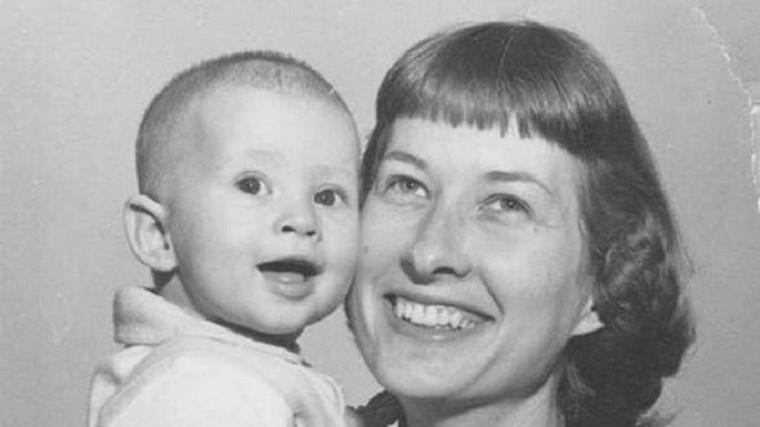
The USA National Phenology Network laments the passing of Marjorie Helen Schwartz, a long-time lilac observer and mother of USA-NPN co-founder Mark D. Schwartz. Marjorie died peacefully on December 21, 2021 at the age of 93. She lived all her life in the Thumb of Michigan’s Lower Peninsula, an area shaped like that digit on a mitten which juts into Lake Huron. After she married Mark’s father, Donald J. Schwartz, in 1954, they lived in Gagetown, a small village in Tuscola County, where sugar refining, ethanol processing, and growing grains and beans dominate the local economy. The pride of Gagetown is the Thumb Octagon Barn and Agricultural Museum which celebrates rural America’s heritage and showcases local life in the early 1900s. Marjorie and Donald were proud and long-time supporters of the Thumb Octagon Barn and Museum. Marjorie retired in the early 1990’s as the secretary of Gagetown Elementary School. In retirement, she enjoyed researching her family’s history, tending her flower and vegetable gardens, and contributing local weather and phenological observations.
Mark was Marjorie’s only child and she was devoted to him and enjoyed and shared his interests. As a master’s student at Michigan State in the early 1980s, Mark worked for Fred Nurnberger, Ph.D., the State Climatologist. Starting in 1980, Nurnberger provided volunteer observers across the Thumb region with standard cotton-region weather shelters, featuring standard NWS liquid-in-glass thermometers as well as standard NWS metal rain gauges. One of these weather stations was at Mark’s family home at 6421 Lincoln St., Gagetown, MI, where his mother faithfully took daily weather observations regularly until about 5 years ago, when her health began to decline.
For his Ph.D. work at the University of Kansas, completed in 1985, Mark used historic lilac and honeysuckle phenological observations from pre-existing networks to model and track the advance of phenological spring across Eastern and Central North America. When Mark moved to Wisconsin in 1992, he began purchasing cloned lilacs and honeysuckles and outfitted local weather stations as phenological observation sites, including Marjorie’s home in Gagetown. Marjorie was a faithful cloned lilac and honeysuckle observer every year since 1993; in a recent phone call, Mark mentioned that he had Marjorie’s 2021 lilac and honeysuckle observations, but still needed to enter them in the NPN database from her hardcopy. Mark also said that his mom “was an ideal environmental observer. She was obsessively careful with details, always asked questions if anything in the procedures seemed unclear and made sure to carefully document all the information completely. Mom provided excellent high-quality weather and phenological observations for all these years.”
Toby Ault at Cornell University, one of Mark’s close colleagues commented, “That’s a very sweet and beautiful story about her being a lilac observer––a testament to how proud she must have been of her son.”
- Written by Julio Betancourt, USGS Scientist Emeritus and Co-founder of the USA-NPN